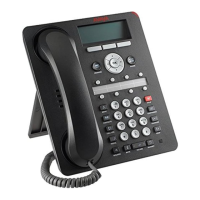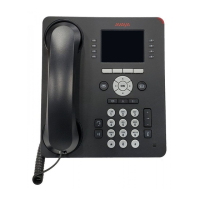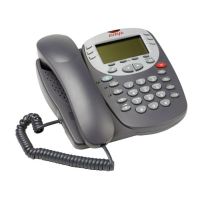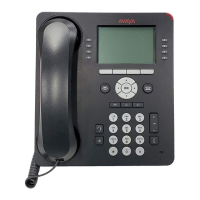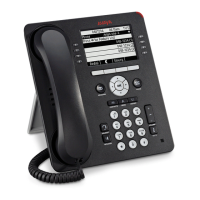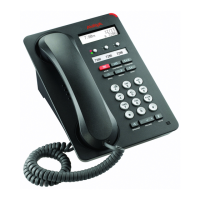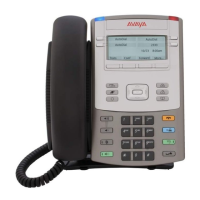Do you have a question about the Avaya IP Office 1416 and is the answer not in the manual?
Safety precautions for using the phone, including warnings about metal objects, power surges, and proximity to other devices.
Overview of the phone's main menus: Appearance, Status, Features, and Button Features.
Allows composing and editing numbers on the phone display before sending them to the system.
Details various options available via soft keys during a call, such as Account, Answer, AutCB, Complete, Dir, Drop, Ignore, Pickup, ToVM.
Procedure to transfer an incoming call directly to voicemail.
Instructions on how to answer a call ringing elsewhere on the phone system using soft keys or short codes.
Explains how to place calls on hold, switch between calls, and retrieve held calls.
Details the process of parking calls, including using menus, short codes, and the Park & Page feature.
Guide on accessing and managing voicemail messages, including playback and soft key functions.
Instructions for recording or deleting a personal mailbox greeting.
Explains how to log into a phone, whether it's in use or not logged in.
Details on manually locking the phone or setting it to auto-lock after inactivity.
Covers adjusting ringer volume, patterns, visual/audible alerting, and coverage ring settings.
Explains settings for display brightness, contrast, call timers, language, and auto exit options.
Procedure to check system software version, date, time, and system information.
Instructions for safely shutting down the telephone system for a specified period.
Accesses user settings like call pickup, park, unpark, transfer, and phone user options.
Displays and allows modification of active call routing features like Do Not Disturb or Follow Me.
Used for configuring phone-specific settings like sound, display, and erase options.
Defines appearance buttons used to represent calls made and received.
Explains the 'do not disturb' feature, call redirection, and display indicators.
| Programmable Buttons | 16 |
|---|---|
| Speakerphone | Yes |
| Headset Support | Yes |
| Connectivity | Ethernet |
| Weight | 1.1 kg |
| Wall Mountable | Yes |
| Message Waiting Indicator | Yes |
| Compatibility | Avaya IP Office |
| Fixed Feature Buttons | Yes |
| Headset Port | RJ-9 |
| Power over Ethernet | Yes (802.3af) |
| Power Source | PoE or AC adapter |
| Supported Protocols | SIP |
